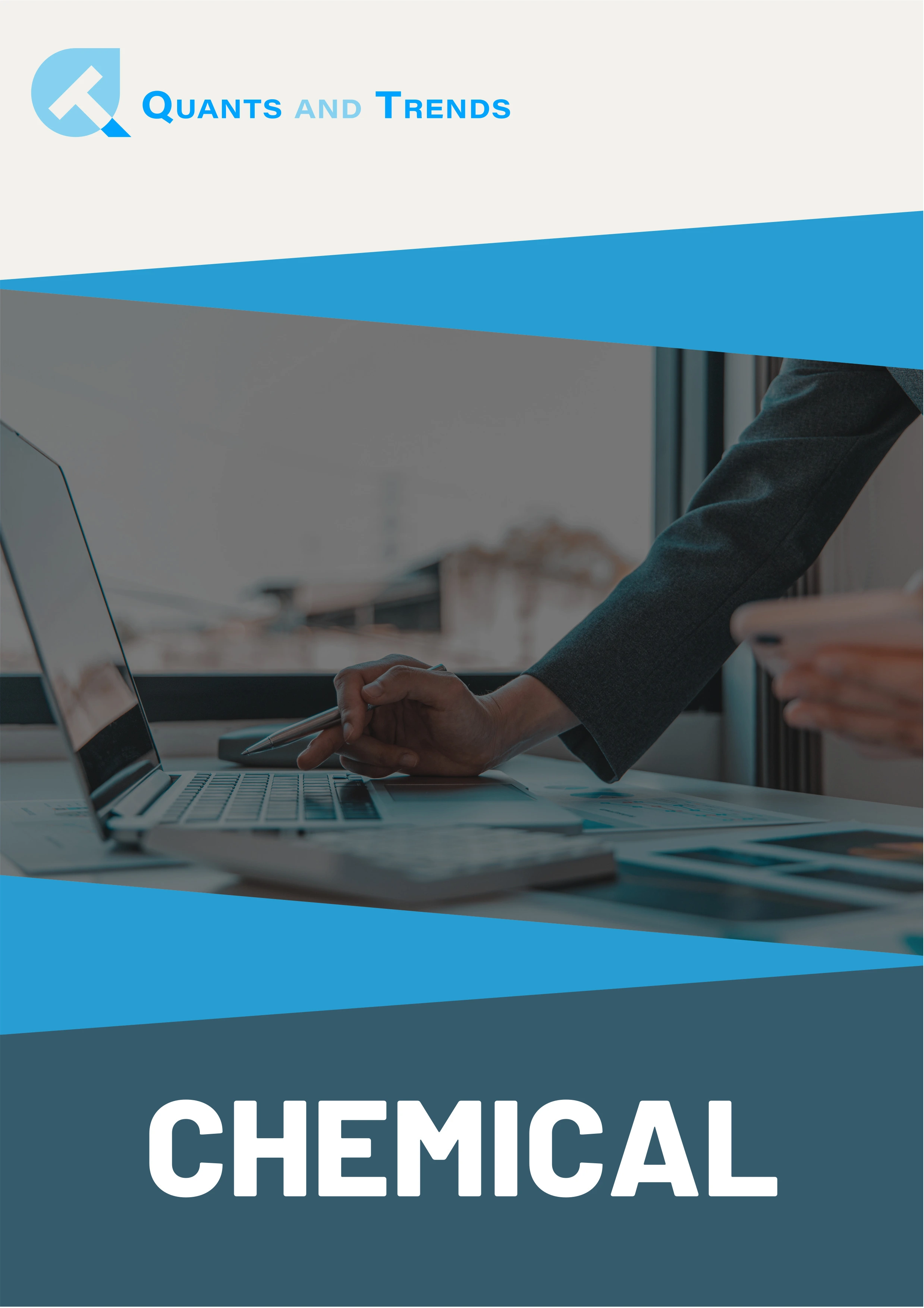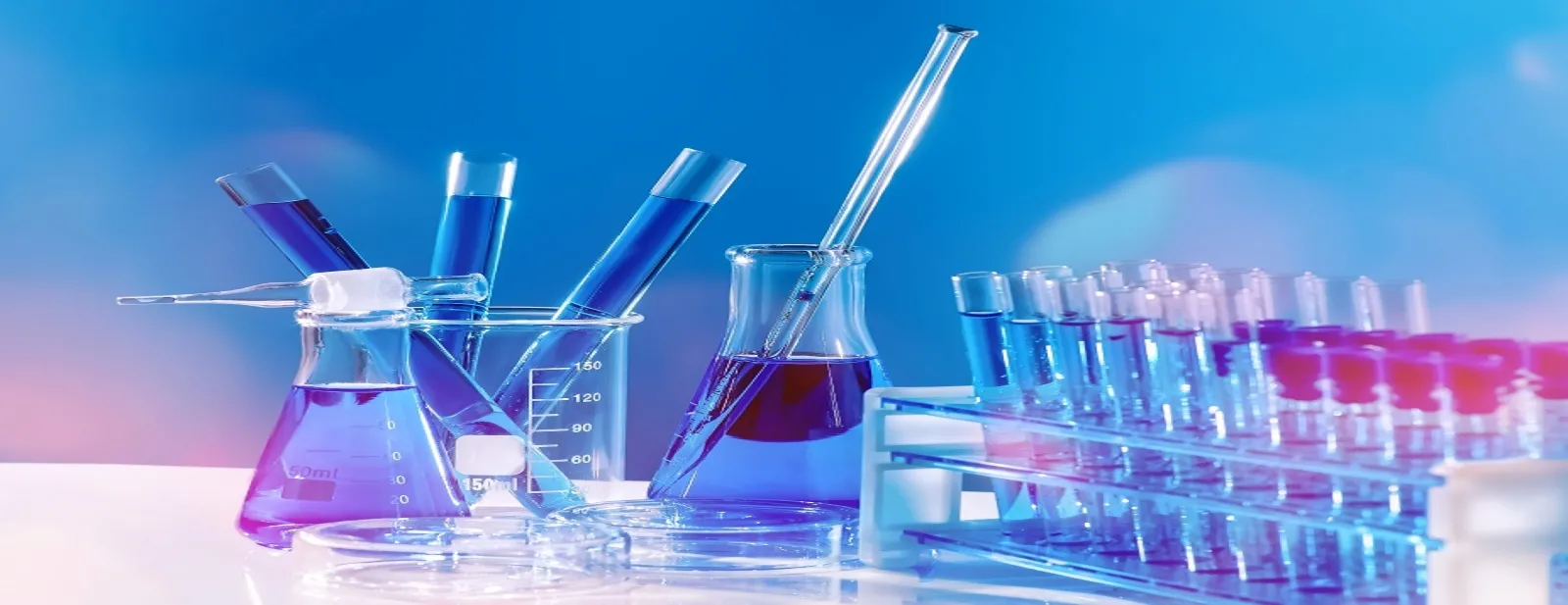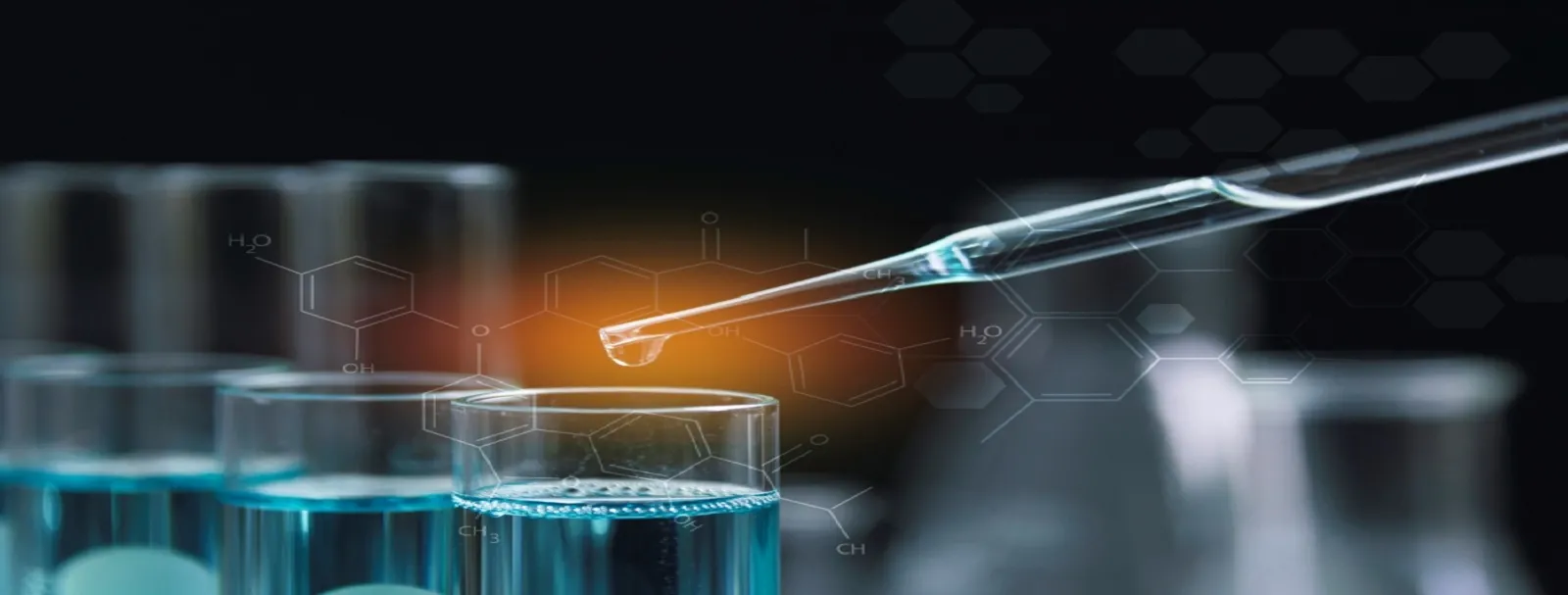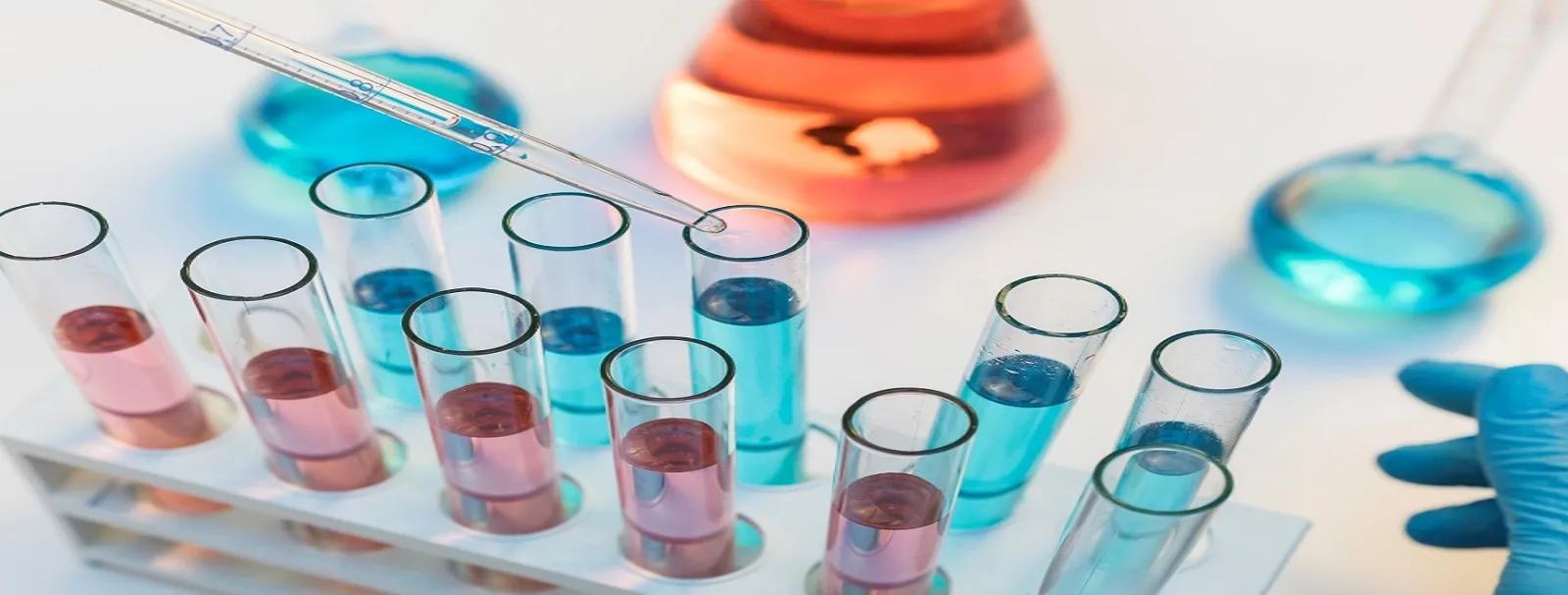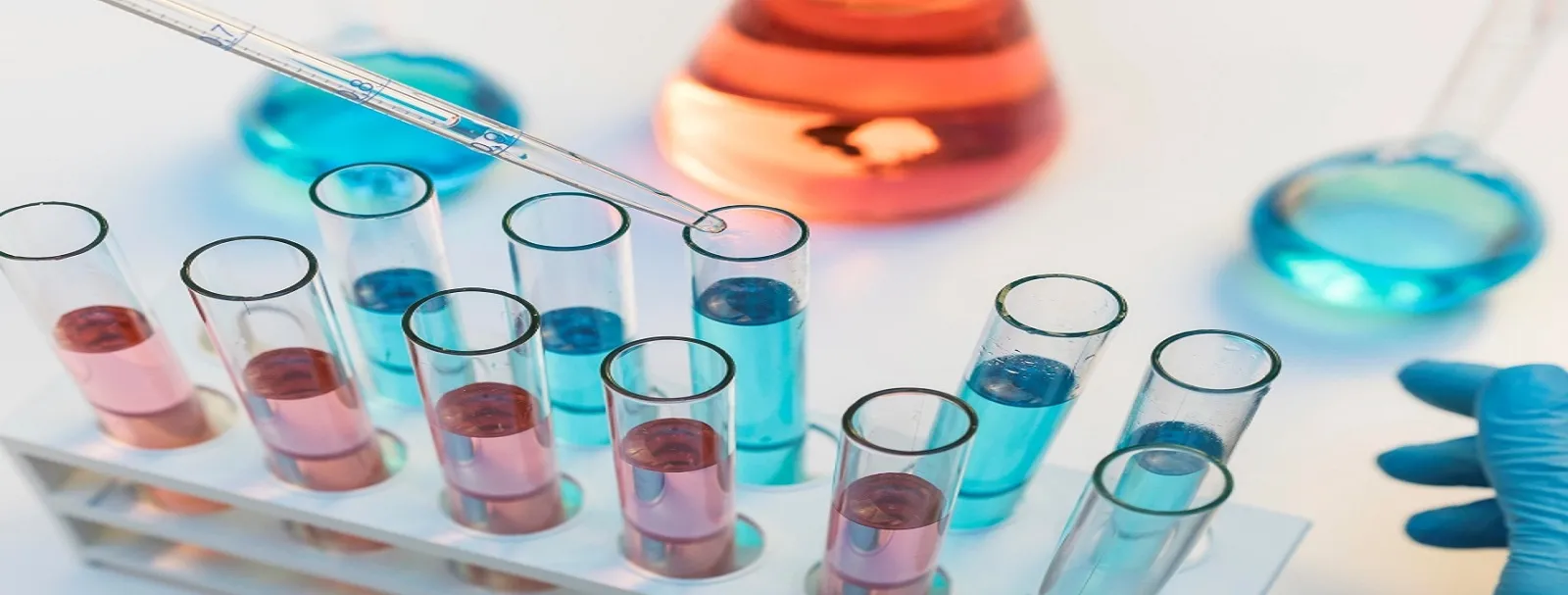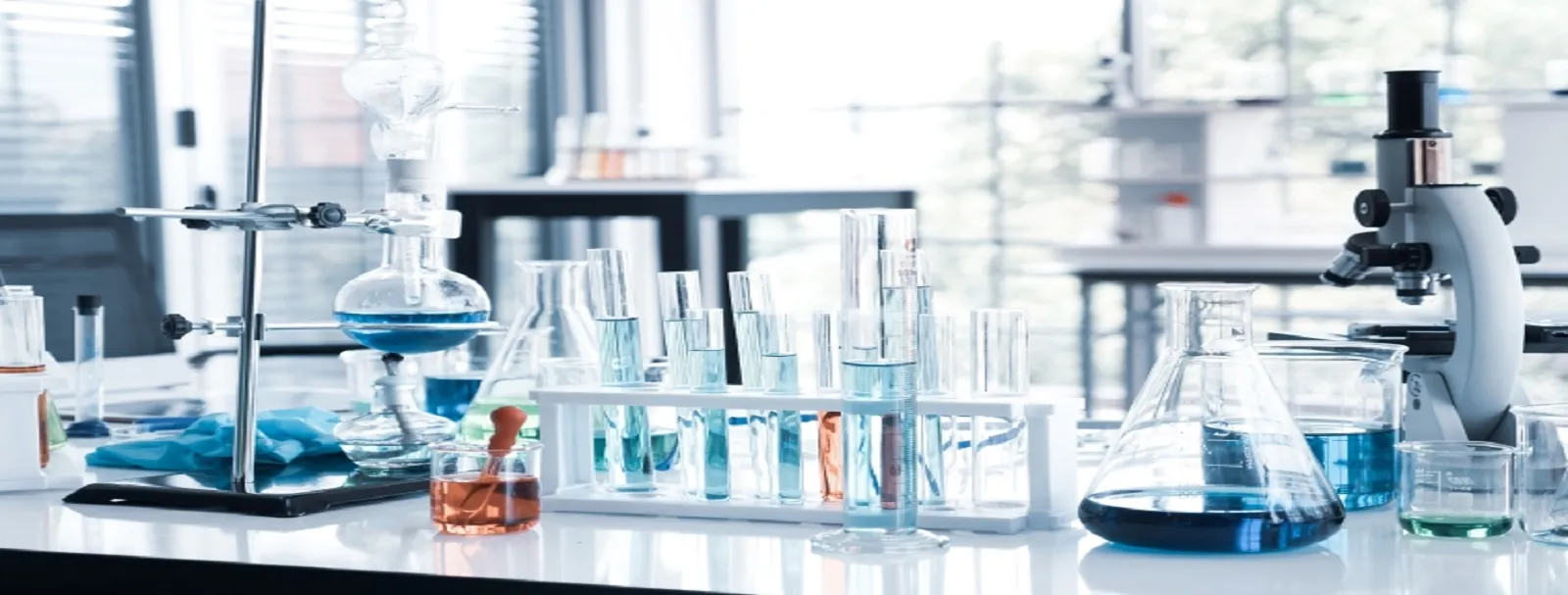Market Outlook
The global Ionic Liquids Market size was valued at USD 127.1 million in 2022 and is forecast to a readjusted size of USD 232.2 million by 2029 with a CAGR of 9.0% during review period.
Introduction: Why the Ionic Liquids Market Matters in 2025
Ionic liquids, salts that remain liquid at room temperature, have unique properties, including high thermal stability and solubility. Their applications in industries such as chemical processing, pharmaceuticals, and renewable energy will drive market growth in 2025.
Market Drivers: What’s Fueling the Ionic Liquids Market Boom?
Green Chemistry and Sustainability: Increasing use of ionic liquids as environmentally friendly solvents in chemical processes, reducing hazardous waste and energy consumption.
Energy Storage and Conversion: Growing interest in ionic liquids for applications in batteries and fuel cells for clean energy systems.
Pharmaceutical Applications: Ionic liquids are increasingly used as solvents and carriers in drug formulations, boosting demand in the pharmaceutical industry.
Innovation in Focus: How Manufacturers Are Raising the Bar
Development of Task-Specific Ionic Liquids: Tailoring ionic liquids to meet the specific needs of various industries, such as green chemistry and energy storage.
Advanced Synthesis Techniques: Improving production methods to enhance the scalability and cost-effectiveness of ionic liquids.
Regional Breakdown: Where the Market is Growing Fastest
Asia-Pacific: Dominated by demand for ionic liquids in chemical manufacturing and energy industries, particularly in China and Japan.
North America: Strong growth in renewable energy and pharmaceuticals industries.
Europe: Increasing adoption in green chemistry, sustainable manufacturing, and energy storage applications.
Strategic Considerations: How to Succeed in the Ionic Liquids Market 2025
Focus on Eco-friendly Products: Develop ionic liquids that meet sustainability standards for green chemistry and energy applications.
Partnerships with Energy Companies: Collaborate with energy firms to explore ionic liquids’ potential in energy storage and conversion technologies.
Conclusion: The Ionic Liquids Market 2025 - Catalyzing Green Chemistry and Energy Solutions
The ionic liquids market is set for growth in 2025 as industries embrace their sustainable, versatile properties for applications in green chemistry, energy storage, and pharmaceuticals. Innovation in product development and production efficiency will drive success in this market.
Key Market Players
- BASF
- Evonik Industries
- Solvay
- Merck
- KOEI Chemical
- Proionic
- Solvionic
- IoLiTec
- Jinkai Chemical
Segmentation By Type
- Imidazolium-based
- Pyridinium-based
- Phosphonium-based
- Other
Segmentation By Application
- Solvents
- Catalysis
- Electrochemistry
- Other
Segmentation By Region
- North America (United States, Canada and Mexico)
- Europe (Germany, France, United Kingdom, Russia, Italy, and Rest of Europe)
- Asia-Pacific (China, Japan, Korea, India, Southeast Asia, and Australia)
- South America (Brazil, Argentina, Colombia, and Rest of South America)
- Middle East & Africa (Saudi Arabia, UAE, Egypt, South Africa, and Rest of Middle East & Africa)
Market SWOT Analysis
What are the strengths of the Ionic Liquids Market in 2025?
Ionic liquids are gaining popularity due to their unique properties, including low volatility, high thermal stability, and non-flammability. They are widely used in green chemistry, energy storage, and material synthesis, making them key players in environmentally friendly industrial processes.
What are the weaknesses of the Ionic Liquids Market in 2025?
One weakness of the ionic liquids market is the high cost of production, which could limit their widespread adoption in cost-sensitive industries. Furthermore, the lack of standardization in the production and application of ionic liquids can make them difficult to scale for mass-market uses.
What are the opportunities for the Ionic Liquids Market in 2025?
As industries focus on sustainability and reducing their environmental impact, ionic liquids have significant potential for growth in green chemistry applications. Additionally, their use in advanced energy storage, catalysis, and even pharmaceuticals opens up new avenues for development.
What are the threats to the Ionic Liquids Market in 2025?
The main threats to the ionic liquids market include competition from alternative green solvents and the high cost of research and development. Additionally, regulatory hurdles and the need for specialized infrastructure may limit the large-scale adoption of ionic liquids in some industries.
Market PESTEL Analysis
How do political factors impact the Ionic Liquids Market in 2025?
Government regulations surrounding the use of chemicals, particularly in industrial and environmental applications, influence the market for ionic liquids. Political support for sustainable chemistry and green technologies drives the adoption of ionic liquids in various sectors.
What economic factors affect the Ionic Liquids Market in 2025?
The increasing demand for ionic liquids in applications such as battery technology, pharmaceuticals, and chemical processing drives market growth. Economic factors such as the availability of raw materials, energy costs, and investment in green technologies impact production and cost dynamics.
How do social factors shape the Ionic Liquids Market in 2025?
Growing awareness of environmental sustainability and the shift toward green chemistry encourages the adoption of ionic liquids, particularly in environmentally-friendly solvents and energy storage systems. Consumer preference for eco-friendly products further boosts market adoption.
What technological factors are relevant to the Ionic Liquids Market in 2025?
Advances in materials science, particularly in the development of highly efficient ionic liquids for energy storage, catalysis, and clean energy applications, drive technological innovation. New research and applications in chemical processes and environmental remediation further expand the market for ionic liquids.
What environmental factors influence the Ionic Liquids Market in 2025?
The push for sustainable and low-toxicity chemicals in various industries, such as pharmaceuticals, agriculture, and energy, strengthens the demand for ionic liquids. Environmental regulations related to chemical waste and pollution control also play a role in the increasing use of ionic liquids as greener alternatives.
How do legal factors impact the Ionic Liquids Market in 2025?
Compliance with global chemical safety regulations, environmental standards, and intellectual property laws surrounding the use and development of ionic liquids affects market entry and growth. Legal restrictions on certain chemicals may encourage the shift toward more sustainable alternatives like ionic liquids.
Market SIPOC Analysis
Who are the suppliers in the Ionic Liquids Market 2025?
Suppliers include chemical manufacturers, specialty material producers, and research institutions that focus on the development and commercialization of ionic liquids for various applications.
What are the inputs in the Ionic Liquids Market 2025?
Inputs include organic salts, solvents, and other chemical reagents used in the synthesis of ionic liquids, as well as specialized equipment for their production.
What processes are involved in the Ionic Liquids Market 2025?
Processes include the synthesis of ionic liquids through the combination of organic and inorganic compounds, purification, and testing for specific properties such as viscosity and conductivity.
Who are the customers in the Ionic Liquids Market 2025?
Customers include chemical manufacturers, pharmaceutical companies, environmental technology firms, and industries requiring solvents for specialized applications like electrochemistry and catalysis.
What are the outcomes in the Ionic Liquids Market 2025?
Outcomes include the widespread adoption of ionic liquids as environmentally friendly solvents, increased use in industrial applications, and a growing role in energy storage, catalysis, and CO2 capture technologies.
Market Porter's Five Forces
What is the threat of new entrants in the Ionic Liquids Market in 2025?
The threat of new entrants is moderate. While ionic liquids are gaining popularity in various applications, such as green chemistry and energy storage, the complex production process and regulatory standards create some barriers to entry for new players.
What is the bargaining power of suppliers in the Ionic Liquids Market in 2025?
The bargaining power of suppliers is moderate. The raw materials for ionic liquids are accessible, but the specialized knowledge required to create effective ionic liquids gives suppliers some leverage in pricing.
What is the bargaining power of buyers in the Ionic Liquids Market in 2025?
The bargaining power of buyers is moderate. Although there are several suppliers of ionic liquids, the specific needs of industries like energy storage and chemical manufacturing reduce the ability of buyers to negotiate significantly on price.
What is the threat of substitute products in the Ionic Liquids Market in 2025?
The threat of substitutes is moderate. While ionic liquids are unique in many of their applications, other solvents and chemicals can serve as substitutes, although they may not offer the same environmental and performance benefits.
What is the intensity of competitive rivalry in the Ionic Liquids Market in 2025?
The intensity of competitive rivalry is high. As the demand for sustainable and efficient solutions increases in sectors like energy storage, chemical engineering, and pharmaceuticals, companies are competing on innovation, pricing, and customization of ionic liquids for specific applications.
Market Upstream Analysis
What are the key raw materials in the Ionic Liquids Market in 2025?
The key raw materials include organic salts such as imidazolium, pyridinium, and ammonium compounds, which are used to synthesize ionic liquids, known for their unique properties like high thermal stability and low volatility.
What role do suppliers play in the Ionic Liquids Market in 2025?
Suppliers provide specialized raw materials and synthesis services to produce ionic liquids with tailored properties for applications in chemical processes, energy storage, and environmental cleanup, meeting the demand for customized solutions.
How does the regulatory environment affect upstream factors in this market?
Regulations regarding chemical safety, environmental impact, and toxicity influence the selection of raw materials and the design of ionic liquids, driving innovation in safer and more sustainable formulations for various applications.
What technological advancements influence upstream production in the Ionic Liquids Market in 2025?
Advancements in synthetic chemistry, particularly in green chemistry and more efficient ionic liquid synthesis methods, are enhancing the scalability and environmental sustainability of ionic liquid production.
What challenges do upstream suppliers face in this market?
Suppliers face challenges related to the high cost of raw materials, ensuring the consistency of ionic liquid properties, and meeting the increasing demand for environmentally friendly and non-toxic ionic liquids in various industries.
Market Midstream Analysis
What are the key processes involved in the midstream of the Ionic Liquids Market in 2025?
The key processes include the synthesis of ionic liquids by combining various organic and inorganic salts, followed by purification, characterization, and packaging for use in industrial applications such as catalysis, energy storage, and pharmaceuticals.
How do manufacturers contribute to the Ionic Liquids Market in 2025?
Manufacturers focus on developing novel ionic liquids with specific properties such as improved solubility, low volatility, and high thermal stability, catering to industries like energy, pharmaceuticals, and chemical manufacturing.
What is the role of packaging in the midstream of this market?
Packaging ensures that ionic liquids are stored and transported safely, preventing contamination and degradation, which is critical since many ionic liquids are sensitive to moisture and air exposure.
What challenges do companies face in the midstream of this market?
Challenges include developing cost-effective production methods for a broad range of ionic liquids, meeting the varying performance requirements of different industries, and ensuring environmental safety during production and transportation.
How do distribution channels affect the Ionic Liquids Market in 2025?
Distribution channels are important for ensuring that ionic liquids reach specialized manufacturers in chemical, pharmaceutical, and energy sectors promptly, supporting their use in advanced technologies like green chemistry and sustainable energy solutions.
Market Downstream Analysis
What are the key consumer segments in the Ionic Liquids Market in 2025?
Key consumers include chemical manufacturers, pharmaceutical companies, and energy storage firms that use ionic liquids for applications in catalysis, drug formulation, and battery technologies.
How do retailers and online platforms contribute to the Ionic Liquids Market in 2025?
Retailers provide smaller quantities of ionic liquids for research and experimental use, while online platforms cater to bulk buyers in industries requiring large volumes for commercial production or industrial applications.
What role does consumer education play in the downstream market for Ionic Liquids in 2025?
Education helps consumers understand the unique properties of ionic liquids, such as their potential in green chemistry, energy storage, and sustainable manufacturing processes, encouraging their adoption in various industries.
What challenges do companies face in the downstream market of this industry?
Challenges include scaling up production to meet growing demand, addressing regulatory concerns, and developing cost-effective, sustainable alternatives to traditional solvents and chemicals.
How does consumer feedback influence the Ionic Liquids Market in 2025?
Consumer feedback drives innovation in the development of more efficient, environmentally friendly ionic liquids that meet the specific needs of energy storage, pharmaceuticals, and green chemical processes.
Chapter 1, to describe Ionic Liquids product scope, market overview, market estimation caveats and base year.
Chapter 2, to profile the top manufacturers of Ionic Liquids, with price, sales, revenue and global market share of Ionic Liquids from 2018 to 2023.
Chapter 3, the Ionic Liquids competitive situation, sales quantity, revenue and global market share of top manufacturers are analyzed emphatically by landscape contrast.
Chapter 4, the Ionic Liquids breakdown data are shown at the regional level, to show the sales quantity, consumption value and growth by regions, from 2018 to 2029.
Chapter 5 and 6, to segment the sales by Type and application, with sales market share and growth rate by type, application, from 2018 to 2029.
Chapter 7, 8, 9, 10 and 11, to break the sales data at the country level, with sales quantity, consumption value and market share for key countries in the world, from 2017 to 2022.and Ionic Liquids market forecast, by regions, type and application, with sales and revenue, from 2024 to 2029.
Chapter 12, market dynamics, drivers, restraints, trends and Porters Five Forces analysis.
Chapter 13, the key raw materials and key suppliers, and industry chain of Ionic Liquids.
Chapter 14 and 15, to describe Ionic Liquids sales channel, distributors, customers, research findings and conclusion.
1 Market Overview
1.1 Product Overview and Scope of Ionic Liquids
1.2 Market Estimation Caveats and Base Year
1.3 Market Analysis by Type
1.3.1 Overview: Global Ionic Liquids Consumption Value by Type: 2018 Versus 2022 Versus 2029
1.3.2 Imidazolium-based
1.3.3 Pyridinium-based
1.3.4 Phosphonium-based
1.3.5 Other
1.4 Market Analysis by Application
1.4.1 Overview: Global Ionic Liquids Consumption Value by Application: 2018 Versus 2022 Versus 2029
1.4.2 Solvents
1.4.3 Catalysis
1.4.4 Electrochemistry
1.4.5 Other
1.5 Global Ionic Liquids Market Size & Forecast
1.5.1 Global Ionic Liquids Consumption Value (2018 & 2022 & 2029)
1.5.2 Global Ionic Liquids Sales Quantity (2018-2029)
1.5.3 Global Ionic Liquids Average Price (2018-2029)
2 Manufacturers Profiles
2.1 BASF
2.1.1 BASF Details
2.1.2 BASF Major Business
2.1.3 BASF Ionic Liquids Product and Services
2.1.4 BASF Ionic Liquids Sales Quantity, Average Price, Revenue, Gross Margin and Market Share (2018-2023)
2.1.5 BASF Recent Developments/Updates
2.2 Evonik Industries
2.2.1 Evonik Industries Details
2.2.2 Evonik Industries Major Business
2.2.3 Evonik Industries Ionic Liquids Product and Services
2.2.4 Evonik Industries Ionic Liquids Sales Quantity, Average Price, Revenue, Gross Margin and Market Share (2018-2023)
2.2.5 Evonik Industries Recent Developments/Updates
2.3 Solvay
2.3.1 Solvay Details
2.3.2 Solvay Major Business
2.3.3 Solvay Ionic Liquids Product and Services
2.3.4 Solvay Ionic Liquids Sales Quantity, Average Price, Revenue, Gross Margin and Market Share (2018-2023)
2.3.5 Solvay Recent Developments/Updates
2.4 Merck
2.4.1 Merck Details
2.4.2 Merck Major Business
2.4.3 Merck Ionic Liquids Product and Services
2.4.4 Merck Ionic Liquids Sales Quantity, Average Price, Revenue, Gross Margin and Market Share (2018-2023)
2.4.5 Merck Recent Developments/Updates
2.5 KOEI Chemical
2.5.1 KOEI Chemical Details
2.5.2 KOEI Chemical Major Business
2.5.3 KOEI Chemical Ionic Liquids Product and Services
2.5.4 KOEI Chemical Ionic Liquids Sales Quantity, Average Price, Revenue, Gross Margin and Market Share (2018-2023)
2.5.5 KOEI Chemical Recent Developments/Updates
2.6 Proionic
2.6.1 Proionic Details
2.6.2 Proionic Major Business
2.6.3 Proionic Ionic Liquids Product and Services
2.6.4 Proionic Ionic Liquids Sales Quantity, Average Price, Revenue, Gross Margin and Market Share (2018-2023)
2.6.5 Proionic Recent Developments/Updates
2.7 Solvionic
2.7.1 Solvionic Details
2.7.2 Solvionic Major Business
2.7.3 Solvionic Ionic Liquids Product and Services
2.7.4 Solvionic Ionic Liquids Sales Quantity, Average Price, Revenue, Gross Margin and Market Share (2018-2023)
2.7.5 Solvionic Recent Developments/Updates
2.8 IoLiTec
2.8.1 IoLiTec Details
2.8.2 IoLiTec Major Business
2.8.3 IoLiTec Ionic Liquids Product and Services
2.8.4 IoLiTec Ionic Liquids Sales Quantity, Average Price, Revenue, Gross Margin and Market Share (2018-2023)
2.8.5 IoLiTec Recent Developments/Updates
2.9 Jinkai Chemical
2.9.1 Jinkai Chemical Details
2.9.2 Jinkai Chemical Major Business
2.9.3 Jinkai Chemical Ionic Liquids Product and Services
2.9.4 Jinkai Chemical Ionic Liquids Sales Quantity, Average Price, Revenue, Gross Margin and Market Share (2018-2023)
2.9.5 Jinkai Chemical Recent Developments/Updates
3 Competitive Environment: Ionic Liquids by Manufacturer
3.1 Global Ionic Liquids Sales Quantity by Manufacturer (2018-2023)
3.2 Global Ionic Liquids Revenue by Manufacturer (2018-2023)
3.3 Global Ionic Liquids Average Price by Manufacturer (2018-2023)
3.4 Market Share Analysis (2022)
3.4.1 Producer Shipments of Ionic Liquids by Manufacturer Revenue ($MM) and Market Share (%): 2022
3.4.2 Top 3 Ionic Liquids Manufacturer Market Share in 2022
3.4.2 Top 6 Ionic Liquids Manufacturer Market Share in 2022
3.5 Ionic Liquids Market: Overall Company Footprint Analysis
3.5.1 Ionic Liquids Market: Region Footprint
3.5.2 Ionic Liquids Market: Company Product Type Footprint
3.5.3 Ionic Liquids Market: Company Product Application Footprint
3.6 New Market Entrants and Barriers to Market Entry
3.7 Mergers, Acquisition, Agreements, and Collaborations
4 Consumption Analysis by Region
4.1 Global Ionic Liquids Market Size by Region
4.1.1 Global Ionic Liquids Sales Quantity by Region (2018-2029)
4.1.2 Global Ionic Liquids Consumption Value by Region (2018-2029)
4.1.3 Global Ionic Liquids Average Price by Region (2018-2029)
4.2 North America Ionic Liquids Consumption Value (2018-2029)
4.3 Europe Ionic Liquids Consumption Value (2018-2029)
4.4 Asia-Pacific Ionic Liquids Consumption Value (2018-2029)
4.5 South America Ionic Liquids Consumption Value (2018-2029)
4.6 Middle East and Africa Ionic Liquids Consumption Value (2018-2029)
5 Market Segment by Type
5.1 Global Ionic Liquids Sales Quantity by Type (2018-2029)
5.2 Global Ionic Liquids Consumption Value by Type (2018-2029)
5.3 Global Ionic Liquids Average Price by Type (2018-2029)
6 Market Segment by Application
6.1 Global Ionic Liquids Sales Quantity by Application (2018-2029)
6.2 Global Ionic Liquids Consumption Value by Application (2018-2029)
6.3 Global Ionic Liquids Average Price by Application (2018-2029)
7 North America
7.1 North America Ionic Liquids Sales Quantity by Type (2018-2029)
7.2 North America Ionic Liquids Sales Quantity by Application (2018-2029)
7.3 North America Ionic Liquids Market Size by Country
7.3.1 North America Ionic Liquids Sales Quantity by Country (2018-2029)
7.3.2 North America Ionic Liquids Consumption Value by Country (2018-2029)
7.3.3 United States Market Size and Forecast (2018-2029)
7.3.4 Canada Market Size and Forecast (2018-2029)
7.3.5 Mexico Market Size and Forecast (2018-2029)
8 Europe
8.1 Europe Ionic Liquids Sales Quantity by Type (2018-2029)
8.2 Europe Ionic Liquids Sales Quantity by Application (2018-2029)
8.3 Europe Ionic Liquids Market Size by Country
8.3.1 Europe Ionic Liquids Sales Quantity by Country (2018-2029)
8.3.2 Europe Ionic Liquids Consumption Value by Country (2018-2029)
8.3.3 Germany Market Size and Forecast (2018-2029)
8.3.4 France Market Size and Forecast (2018-2029)
8.3.5 United Kingdom Market Size and Forecast (2018-2029)
8.3.6 Russia Market Size and Forecast (2018-2029)
8.3.7 Italy Market Size and Forecast (2018-2029)
9 Asia-Pacific
9.1 Asia-Pacific Ionic Liquids Sales Quantity by Type (2018-2029)
9.2 Asia-Pacific Ionic Liquids Sales Quantity by Application (2018-2029)
9.3 Asia-Pacific Ionic Liquids Market Size by Region
9.3.1 Asia-Pacific Ionic Liquids Sales Quantity by Region (2018-2029)
9.3.2 Asia-Pacific Ionic Liquids Consumption Value by Region (2018-2029)
9.3.3 China Market Size and Forecast (2018-2029)
9.3.4 Japan Market Size and Forecast (2018-2029)
9.3.5 Korea Market Size and Forecast (2018-2029)
9.3.6 India Market Size and Forecast (2018-2029)
9.3.7 Southeast Asia Market Size and Forecast (2018-2029)
9.3.8 Australia Market Size and Forecast (2018-2029)
10 South America
10.1 South America Ionic Liquids Sales Quantity by Type (2018-2029)
10.2 South America Ionic Liquids Sales Quantity by Application (2018-2029)
10.3 South America Ionic Liquids Market Size by Country
10.3.1 South America Ionic Liquids Sales Quantity by Country (2018-2029)
10.3.2 South America Ionic Liquids Consumption Value by Country (2018-2029)
10.3.3 Brazil Market Size and Forecast (2018-2029)
10.3.4 Argentina Market Size and Forecast (2018-2029)
11 Middle East & Africa
11.1 Middle East & Africa Ionic Liquids Sales Quantity by Type (2018-2029)
11.2 Middle East & Africa Ionic Liquids Sales Quantity by Application (2018-2029)
11.3 Middle East & Africa Ionic Liquids Market Size by Country
11.3.1 Middle East & Africa Ionic Liquids Sales Quantity by Country (2018-2029)
11.3.2 Middle East & Africa Ionic Liquids Consumption Value by Country (2018-2029)
11.3.3 Turkey Market Size and Forecast (2018-2029)
11.3.4 Egypt Market Size and Forecast (2018-2029)
11.3.5 Saudi Arabia Market Size and Forecast (2018-2029)
11.3.6 South Africa Market Size and Forecast (2018-2029)
12 Market Dynamics
12.1 Ionic Liquids Market Drivers
12.2 Ionic Liquids Market Restraints
12.3 Ionic Liquids Trends Analysis
12.4 Porters Five Forces Analysis
12.4.1 Threat of New Entrants
12.4.2 Bargaining Power of Suppliers
12.4.3 Bargaining Power of Buyers
12.4.4 Threat of Substitutes
12.4.5 Competitive Rivalry
13 Raw Material and Industry Chain
13.1 Raw Material of Ionic Liquids and Key Manufacturers
13.2 Manufacturing Costs Percentage of Ionic Liquids
13.3 Ionic Liquids Production Process
13.4 Ionic Liquids Industrial Chain
14 Shipments by Distribution Channel
14.1 Sales Channel
14.1.1 Direct to End-User
14.1.2 Distributors
14.2 Ionic Liquids Typical Distributors
14.3 Ionic Liquids Typical Customers
15 Research Findings and Conclusion
16 Appendix
16.1 Methodology
16.2 Research Process and Data Source
16.3 Disclaimer
List of Tables
Table 1. Global Ionic Liquids Consumption Value by Type, (USD Million), 2018 & 2022 & 2029
Table 2. Global Ionic Liquids Consumption Value by Application, (USD Million), 2018 & 2022 & 2029
Table 3. BASF Basic Information, Manufacturing Base and Competitors
Table 4. BASF Major Business
Table 5. BASF Ionic Liquids Product and Services
Table 6. BASF Ionic Liquids Sales Quantity (Tons), Average Price (US$/Kg), Revenue (USD Million), Gross Margin and Market Share (2018-2023)
Table 7. BASF Recent Developments/Updates
Table 8. Evonik Industries Basic Information, Manufacturing Base and Competitors
Table 9. Evonik Industries Major Business
Table 10. Evonik Industries Ionic Liquids Product and Services
Table 11. Evonik Industries Ionic Liquids Sales Quantity (Tons), Average Price (US$/Kg), Revenue (USD Million), Gross Margin and Market Share (2018-2023)
Table 12. Evonik Industries Recent Developments/Updates
Table 13. Solvay Basic Information, Manufacturing Base and Competitors
Table 14. Solvay Major Business
Table 15. Solvay Ionic Liquids Product and Services
Table 16. Solvay Ionic Liquids Sales Quantity (Tons), Average Price (US$/Kg), Revenue (USD Million), Gross Margin and Market Share (2018-2023)
Table 17. Solvay Recent Developments/Updates
Table 18. Merck Basic Information, Manufacturing Base and Competitors
Table 19. Merck Major Business
Table 20. Merck Ionic Liquids Product and Services
Table 21. Merck Ionic Liquids Sales Quantity (Tons), Average Price (US$/Kg), Revenue (USD Million), Gross Margin and Market Share (2018-2023)
Table 22. Merck Recent Developments/Updates
Table 23. KOEI Chemical Basic Information, Manufacturing Base and Competitors
Table 24. KOEI Chemical Major Business
Table 25. KOEI Chemical Ionic Liquids Product and Services
Table 26. KOEI Chemical Ionic Liquids Sales Quantity (Tons), Average Price (US$/Kg), Revenue (USD Million), Gross Margin and Market Share (2018-2023)
Table 27. KOEI Chemical Recent Developments/Updates
Table 28. Proionic Basic Information, Manufacturing Base and Competitors
Table 29. Proionic Major Business
Table 30. Proionic Ionic Liquids Product and Services
Table 31. Proionic Ionic Liquids Sales Quantity (Tons), Average Price (US$/Kg), Revenue (USD Million), Gross Margin and Market Share (2018-2023)
Table 32. Proionic Recent Developments/Updates
Table 33. Solvionic Basic Information, Manufacturing Base and Competitors
Table 34. Solvionic Major Business
Table 35. Solvionic Ionic Liquids Product and Services
Table 36. Solvionic Ionic Liquids Sales Quantity (Tons), Average Price (US$/Kg), Revenue (USD Million), Gross Margin and Market Share (2018-2023)
Table 37. Solvionic Recent Developments/Updates
Table 38. IoLiTec Basic Information, Manufacturing Base and Competitors
Table 39. IoLiTec Major Business
Table 40. IoLiTec Ionic Liquids Product and Services
Table 41. IoLiTec Ionic Liquids Sales Quantity (Tons), Average Price (US$/Kg), Revenue (USD Million), Gross Margin and Market Share (2018-2023)
Table 42. IoLiTec Recent Developments/Updates
Table 43. Jinkai Chemical Basic Information, Manufacturing Base and Competitors
Table 44. Jinkai Chemical Major Business
Table 45. Jinkai Chemical Ionic Liquids Product and Services
Table 46. Jinkai Chemical Ionic Liquids Sales Quantity (Tons), Average Price (US$/Kg), Revenue (USD Million), Gross Margin and Market Share (2018-2023)
Table 47. Jinkai Chemical Recent Developments/Updates
Table 48. Global Ionic Liquids Sales Quantity by Manufacturer (2018-2023) & (Tons)
Table 49. Global Ionic Liquids Revenue by Manufacturer (2018-2023) & (USD Million)
Table 50. Global Ionic Liquids Average Price by Manufacturer (2018-2023) & (US$/Kg)
Table 51. Market Position of Manufacturers in Ionic Liquids, (Tier 1, Tier 2, and Tier 3), Based on Consumption Value in 2022
Table 52. Head Office and Ionic Liquids Production Site of Key Manufacturer
Table 53. Ionic Liquids Market: Company Product Type Footprint
Table 54. Ionic Liquids Market: Company Product Application Footprint
Table 55. Ionic Liquids New Market Entrants and Barriers to Market Entry
Table 56. Ionic Liquids Mergers, Acquisition, Agreements, and Collaborations
Table 57. Global Ionic Liquids Sales Quantity by Region (2018-2023) & (Tons)
Table 58. Global Ionic Liquids Sales Quantity by Region (2024-2029) & (Tons)
Table 59. Global Ionic Liquids Consumption Value by Region (2018-2023) & (USD Million)
Table 60. Global Ionic Liquids Consumption Value by Region (2024-2029) & (USD Million)
Table 61. Global Ionic Liquids Average Price by Region (2018-2023) & (US$/Kg)
Table 62. Global Ionic Liquids Average Price by Region (2024-2029) & (US$/Kg)
Table 63. Global Ionic Liquids Sales Quantity by Type (2018-2023) & (Tons)
Table 64. Global Ionic Liquids Sales Quantity by Type (2024-2029) & (Tons)
Table 65. Global Ionic Liquids Consumption Value by Type (2018-2023) & (USD Million)
Table 66. Global Ionic Liquids Consumption Value by Type (2024-2029) & (USD Million)
Table 67. Global Ionic Liquids Average Price by Type (2018-2023) & (US$/Kg)
Table 68. Global Ionic Liquids Average Price by Type (2024-2029) & (US$/Kg)
Table 69. Global Ionic Liquids Sales Quantity by Application (2018-2023) & (Tons)
Table 70. Global Ionic Liquids Sales Quantity by Application (2024-2029) & (Tons)
Table 71. Global Ionic Liquids Consumption Value by Application (2018-2023) & (USD Million)
Table 72. Global Ionic Liquids Consumption Value by Application (2024-2029) & (USD Million)
Table 73. Global Ionic Liquids Average Price by Application (2018-2023) & (US$/Kg)
Table 74. Global Ionic Liquids Average Price by Application (2024-2029) & (US$/Kg)
Table 75. North America Ionic Liquids Sales Quantity by Type (2018-2023) & (Tons)
Table 76. North America Ionic Liquids Sales Quantity by Type (2024-2029) & (Tons)
Table 77. North America Ionic Liquids Sales Quantity by Application (2018-2023) & (Tons)
Table 78. North America Ionic Liquids Sales Quantity by Application (2024-2029) & (Tons)
Table 79. North America Ionic Liquids Sales Quantity by Country (2018-2023) & (Tons)
Table 80. North America Ionic Liquids Sales Quantity by Country (2024-2029) & (Tons)
Table 81. North America Ionic Liquids Consumption Value by Country (2018-2023) & (USD Million)
Table 82. North America Ionic Liquids Consumption Value by Country (2024-2029) & (USD Million)
Table 83. Europe Ionic Liquids Sales Quantity by Type (2018-2023) & (Tons)
Table 84. Europe Ionic Liquids Sales Quantity by Type (2024-2029) & (Tons)
Table 85. Europe Ionic Liquids Sales Quantity by Application (2018-2023) & (Tons)
Table 86. Europe Ionic Liquids Sales Quantity by Application (2024-2029) & (Tons)
Table 87. Europe Ionic Liquids Sales Quantity by Country (2018-2023) & (Tons)
Table 88. Europe Ionic Liquids Sales Quantity by Country (2024-2029) & (Tons)
Table 89. Europe Ionic Liquids Consumption Value by Country (2018-2023) & (USD Million)
Table 90. Europe Ionic Liquids Consumption Value by Country (2024-2029) & (USD Million)
Table 91. Asia-Pacific Ionic Liquids Sales Quantity by Type (2018-2023) & (Tons)
Table 92. Asia-Pacific Ionic Liquids Sales Quantity by Type (2024-2029) & (Tons)
Table 93. Asia-Pacific Ionic Liquids Sales Quantity by Application (2018-2023) & (Tons)
Table 94. Asia-Pacific Ionic Liquids Sales Quantity by Application (2024-2029) & (Tons)
Table 95. Asia-Pacific Ionic Liquids Sales Quantity by Region (2018-2023) & (Tons)
Table 96. Asia-Pacific Ionic Liquids Sales Quantity by Region (2024-2029) & (Tons)
Table 97. Asia-Pacific Ionic Liquids Consumption Value by Region (2018-2023) & (USD Million)
Table 98. Asia-Pacific Ionic Liquids Consumption Value by Region (2024-2029) & (USD Million)
Table 99. South America Ionic Liquids Sales Quantity by Type (2018-2023) & (Tons)
Table 100. South America Ionic Liquids Sales Quantity by Type (2024-2029) & (Tons)
Table 101. South America Ionic Liquids Sales Quantity by Application (2018-2023) & (Tons)
Table 102. South America Ionic Liquids Sales Quantity by Application (2024-2029) & (Tons)
Table 103. South America Ionic Liquids Sales Quantity by Country (2018-2023) & (Tons)
Table 104. South America Ionic Liquids Sales Quantity by Country (2024-2029) & (Tons)
Table 105. South America Ionic Liquids Consumption Value by Country (2018-2023) & (USD Million)
Table 106. South America Ionic Liquids Consumption Value by Country (2024-2029) & (USD Million)
Table 107. Middle East & Africa Ionic Liquids Sales Quantity by Type (2018-2023) & (Tons)
Table 108. Middle East & Africa Ionic Liquids Sales Quantity by Type (2024-2029) & (Tons)
Table 109. Middle East & Africa Ionic Liquids Sales Quantity by Application (2018-2023) & (Tons)
Table 110. Middle East & Africa Ionic Liquids Sales Quantity by Application (2024-2029) & (Tons)
Table 111. Middle East & Africa Ionic Liquids Sales Quantity by Region (2018-2023) & (Tons)
Table 112. Middle East & Africa Ionic Liquids Sales Quantity by Region (2024-2029) & (Tons)
Table 113. Middle East & Africa Ionic Liquids Consumption Value by Region (2018-2023) & (USD Million)
Table 114. Middle East & Africa Ionic Liquids Consumption Value by Region (2024-2029) & (USD Million)
Table 115. Ionic Liquids Raw Material
Table 116. Key Manufacturers of Ionic Liquids Raw Materials
Table 117. Ionic Liquids Typical Distributors
Table 118. Ionic Liquids Typical Customers
List of Figures
Figure 1. Ionic Liquids Picture
Figure 2. Global Ionic Liquids Consumption Value by Type, (USD Million), 2018 & 2022 & 2029
Figure 3. Global Ionic Liquids Consumption Value Market Share by Type in 2022
Figure 4. Imidazolium-based Examples
Figure 5. Pyridinium-based Examples
Figure 6. Phosphonium-based Examples
Figure 7. Other Examples
Figure 8. Global Ionic Liquids Consumption Value by Application, (USD Million), 2018 & 2022 & 2029
Figure 9. Global Ionic Liquids Consumption Value Market Share by Application in 2022
Figure 10. Solvents Examples
Figure 11. Catalysis Examples
Figure 12. Electrochemistry Examples
Figure 13. Other Examples
Figure 14. Global Ionic Liquids Consumption Value, (USD Million): 2018 & 2022 & 2029
Figure 15. Global Ionic Liquids Consumption Value and Forecast (2018-2029) & (USD Million)
Figure 16. Global Ionic Liquids Sales Quantity (2018-2029) & (Tons)
Figure 17. Global Ionic Liquids Average Price (2018-2029) & (US$/Kg)
Figure 18. Global Ionic Liquids Sales Quantity Market Share by Manufacturer in 2022
Figure 19. Global Ionic Liquids Consumption Value Market Share by Manufacturer in 2022
Figure 20. Producer Shipments of Ionic Liquids by Manufacturer Sales Quantity ($MM) and Market Share (%): 2021
Figure 21. Top 3 Ionic Liquids Manufacturer (Consumption Value) Market Share in 2022
Figure 22. Top 6 Ionic Liquids Manufacturer (Consumption Value) Market Share in 2022
Figure 23. Global Ionic Liquids Sales Quantity Market Share by Region (2018-2029)
Figure 24. Global Ionic Liquids Consumption Value Market Share by Region (2018-2029)
Figure 25. North America Ionic Liquids Consumption Value (2018-2029) & (USD Million)
Figure 26. Europe Ionic Liquids Consumption Value (2018-2029) & (USD Million)
Figure 27. Asia-Pacific Ionic Liquids Consumption Value (2018-2029) & (USD Million)
Figure 28. South America Ionic Liquids Consumption Value (2018-2029) & (USD Million)
Figure 29. Middle East & Africa Ionic Liquids Consumption Value (2018-2029) & (USD Million)
Figure 30. Global Ionic Liquids Sales Quantity Market Share by Type (2018-2029)
Figure 31. Global Ionic Liquids Consumption Value Market Share by Type (2018-2029)
Figure 32. Global Ionic Liquids Average Price by Type (2018-2029) & (US$/Kg)
Figure 33. Global Ionic Liquids Sales Quantity Market Share by Application (2018-2029)
Figure 34. Global Ionic Liquids Consumption Value Market Share by Application (2018-2029)
Figure 35. Global Ionic Liquids Average Price by Application (2018-2029) & (US$/Kg)
Figure 36. North America Ionic Liquids Sales Quantity Market Share by Type (2018-2029)
Figure 37. North America Ionic Liquids Sales Quantity Market Share by Application (2018-2029)
Figure 38. North America Ionic Liquids Sales Quantity Market Share by Country (2018-2029)
Figure 39. North America Ionic Liquids Consumption Value Market Share by Country (2018-2029)
Figure 40. United States Ionic Liquids Consumption Value and Growth Rate (2018-2029) & (USD Million)
Figure 41. Canada Ionic Liquids Consumption Value and Growth Rate (2018-2029) & (USD Million)
Figure 42. Mexico Ionic Liquids Consumption Value and Growth Rate (2018-2029) & (USD Million)
Figure 43. Europe Ionic Liquids Sales Quantity Market Share by Type (2018-2029)
Figure 44. Europe Ionic Liquids Sales Quantity Market Share by Application (2018-2029)
Figure 45. Europe Ionic Liquids Sales Quantity Market Share by Country (2018-2029)
Figure 46. Europe Ionic Liquids Consumption Value Market Share by Country (2018-2029)
Figure 47. Germany Ionic Liquids Consumption Value and Growth Rate (2018-2029) & (USD Million)
Figure 48. France Ionic Liquids Consumption Value and Growth Rate (2018-2029) & (USD Million)
Figure 49. United Kingdom Ionic Liquids Consumption Value and Growth Rate (2018-2029) & (USD Million)
Figure 50. Russia Ionic Liquids Consumption Value and Growth Rate (2018-2029) & (USD Million)
Figure 51. Italy Ionic Liquids Consumption Value and Growth Rate (2018-2029) & (USD Million)
Figure 52. Asia-Pacific Ionic Liquids Sales Quantity Market Share by Type (2018-2029)
Figure 53. Asia-Pacific Ionic Liquids Sales Quantity Market Share by Application (2018-2029)
Figure 54. Asia-Pacific Ionic Liquids Sales Quantity Market Share by Region (2018-2029)
Figure 55. Asia-Pacific Ionic Liquids Consumption Value Market Share by Region (2018-2029)
Figure 56. China Ionic Liquids Consumption Value and Growth Rate (2018-2029) & (USD Million)
Figure 57. Japan Ionic Liquids Consumption Value and Growth Rate (2018-2029) & (USD Million)
Figure 58. Korea Ionic Liquids Consumption Value and Growth Rate (2018-2029) & (USD Million)
Figure 59. India Ionic Liquids Consumption Value and Growth Rate (2018-2029) & (USD Million)
Figure 60. Southeast Asia Ionic Liquids Consumption Value and Growth Rate (2018-2029) & (USD Million)
Figure 61. Australia Ionic Liquids Consumption Value and Growth Rate (2018-2029) & (USD Million)
Figure 62. South America Ionic Liquids Sales Quantity Market Share by Type (2018-2029)
Figure 63. South America Ionic Liquids Sales Quantity Market Share by Application (2018-2029)
Figure 64. South America Ionic Liquids Sales Quantity Market Share by Country (2018-2029)
Figure 65. South America Ionic Liquids Consumption Value Market Share by Country (2018-2029)
Figure 66. Brazil Ionic Liquids Consumption Value and Growth Rate (2018-2029) & (USD Million)
Figure 67. Argentina Ionic Liquids Consumption Value and Growth Rate (2018-2029) & (USD Million)
Figure 68. Middle East & Africa Ionic Liquids Sales Quantity Market Share by Type (2018-2029)
Figure 69. Middle East & Africa Ionic Liquids Sales Quantity Market Share by Application (2018-2029)
Figure 70. Middle East & Africa Ionic Liquids Sales Quantity Market Share by Region (2018-2029)
Figure 71. Middle East & Africa Ionic Liquids Consumption Value Market Share by Region (2018-2029)
Figure 72. Turkey Ionic Liquids Consumption Value and Growth Rate (2018-2029) & (USD Million)
Figure 73. Egypt Ionic Liquids Consumption Value and Growth Rate (2018-2029) & (USD Million)
Figure 74. Saudi Arabia Ionic Liquids Consumption Value and Growth Rate (2018-2029) & (USD Million)
Figure 75. South Africa Ionic Liquids Consumption Value and Growth Rate (2018-2029) & (USD Million)
Figure 76. Ionic Liquids Market Drivers
Figure 77. Ionic Liquids Market Restraints
Figure 78. Ionic Liquids Market Trends
Figure 79. Porters Five Forces Analysis
Figure 80. Manufacturing Cost Structure Analysis of Ionic Liquids in 2022
Figure 81. Manufacturing Process Analysis of Ionic Liquids
Figure 82. Ionic Liquids Industrial Chain
Figure 83. Sales Quantity Channel: Direct to End-User vs Distributors
Figure 84. Direct Channel Pros & Cons
Figure 85. Indirect Channel Pros & Cons
Figure 86. Methodology
Figure 87. Research Process and Data Source
